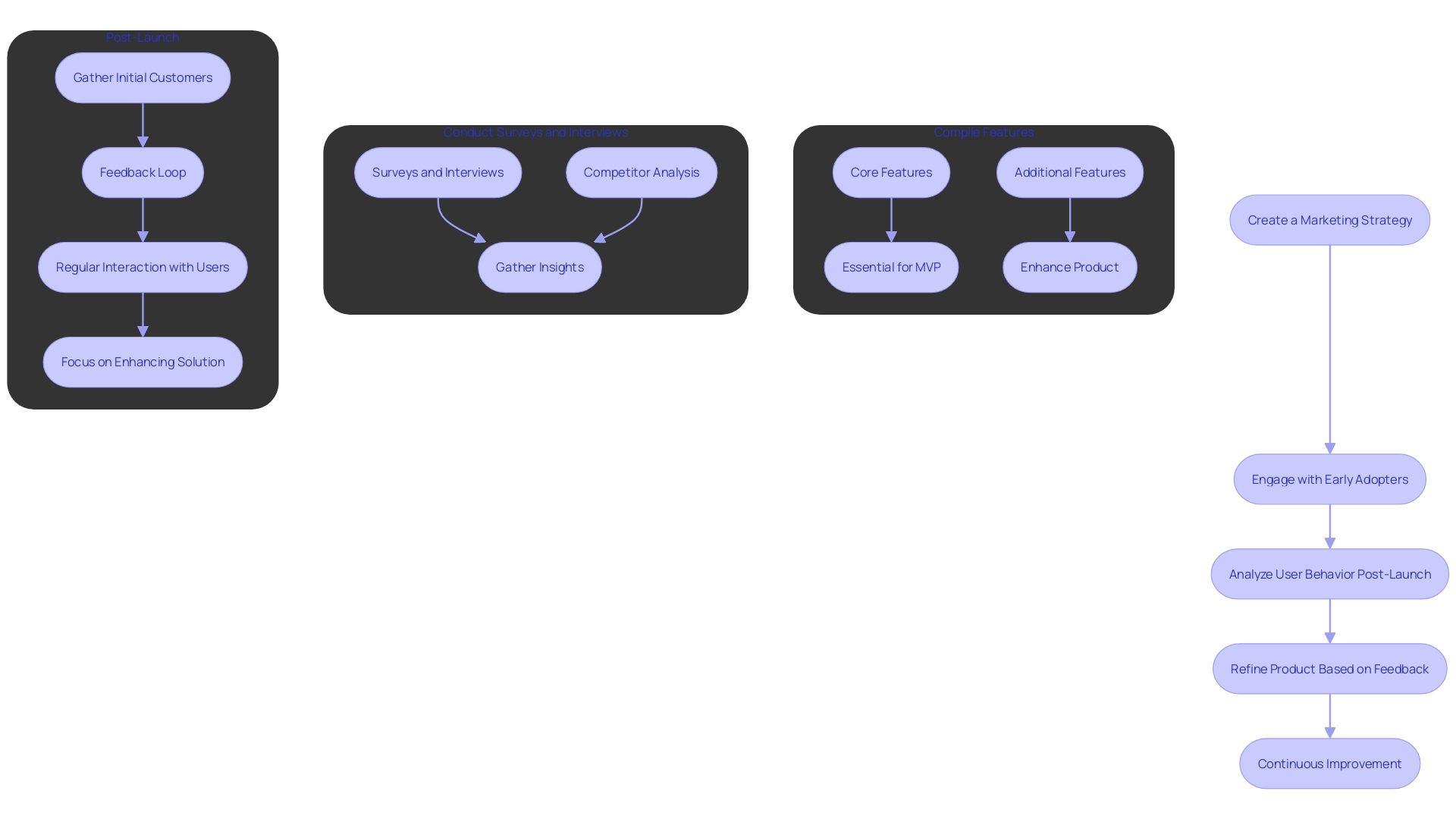MVP Tech: Innovations and Best Practices

Introduction
In today’s fast-moving world of product development, the journey from concept to market success can feel overwhelming. However, applying the principles of Minimum Viable Product (MVP) development gives Chief Marketing Officers (CMOs) a clear roadmap. An MVP is not about releasing a stripped-down version—it’s about solving a specific problem for a target audience, focusing on core features, and refining through real user feedback.
This disciplined approach is why companies like Airbnb could validate their groundbreaking idea early on and grow into global leaders.
Equally important is selecting the right technology stack. It must enable rapid, agile development while being scalable and secure. With AI-powered tools, development cycles accelerate, allowing faster iteration and smarter decision-making.
The iterative development model, fueled by consistent feedback, ensures products evolve in line with user needs. This builds trust, reduces risk, and strengthens customer loyalty.
Finally, a well-executed MVP launch strategy—from marketing messaging to post-launch analytics—drives adoption and validates the business model. When executed with precision, MVPs don’t just test ideas; they set the stage for long-term success.
Key Principles of MVP Development
Successful MVPs are built on a few core principles:
-
Solve a specific problem for a defined audience.
Eric Ries, author of The Lean Startup, describes MVPs as the simplest product version that enables validated learning about customers with minimal effort. Airbnb tested exactly this when it validated whether people would stay in strangers’ homes. -
Focus only on essential features.
By building just the core functionality, teams can reduce development time and cost. Studies show it typically takes 3–4 months to develop an MVP, but nearly 90% of founders overcomplicate the process and delay market entry. -
Adopt an experimental mindset.
Treat the MVP as a test bed, not a final product. Feedback from early adopters helps confirm assumptions, refine features, and align the solution with actual market needs.
At its core, MVP development is about starting small, validating fast, and iterating smart. This mindset lowers risk and increases the odds of achieving product-market fit.
Selecting the Right Technology for MVP
The technology stack behind an MVP can make or break its success. Choosing tools that support rapid prototyping and agile development is key.
-
Agile frameworks and AI tools can shorten development cycles by automating repetitive tasks and surfacing insights for better decision-making.
-
Scalability and security must be built in from the start. Tom Gorup emphasizes the need to create a security-first culture, ensuring tech systems remain reliable as the product grows.
-
Developer expertise matters. Selecting technologies your team already understands avoids unnecessary delays and technical debt.
As Jason Beres of Infragistics notes, AI-driven tools are transforming development, enabling faster MVP creation while maintaining quality. By balancing innovation with practicality, companies ensure their MVP is both scalable and future-ready.
Iterative Development and User Feedback
The real power of MVPs lies in iteration. Launching in phases allows teams to gather user insights early and often.
-
User research tools like diary studies and focus groups provide direct visibility into behavior and preferences.
-
Feedback loops enable teams to fine-tune features and prioritize what actually delivers value.
-
Community engagement builds a sense of ownership among early adopters, strengthening loyalty.
Iteration ensures products evolve in sync with the audience’s needs, driving both innovation and customer satisfaction.
Best Practices for MVP Launch and Post-Launch
Launching an MVP requires precision planning.
-
Craft a clear marketing narrative. Highlight the unique value proposition and position the MVP as a solution to a pressing problem.
-
Engage early adopters. Their feedback helps refine the product while generating momentum.
-
Define success metrics. Track feature usage, retention, and engagement to inform future iterations.
-
Adapt post-launch. Continuously monitor behavior and market trends, adjusting strategies accordingly.
Eric Ries’ framework remains relevant, but today’s saturated markets demand that MVPs deliver significant improvements to stand out. Narrowing your audience ensures you deliver more value to a specific segment than competitors.
Organizations recognized by Products That Count’s Annual Product Awards demonstrate how innovation and strategic MVP execution lead to market impact and long-term growth.

Conclusion
For CMOs, MVP development offers a structured pathway from concept to market success. By solving a clear problem for a defined audience and focusing on core features, companies can validate ideas quickly while reducing risks.
The right technology stack, enhanced by AI tools, accelerates delivery and ensures scalability. Iterative development, powered by user feedback, refines features while building customer trust.
A thoughtful launch and post-launch strategy amplifies impact, with clear messaging, engagement, and metrics guiding the path forward.
Ultimately, MVPs are not just a development shortcut—they are a strategic growth framework. They empower teams to move fast, learn continuously, and deliver value that resonates with customers.
